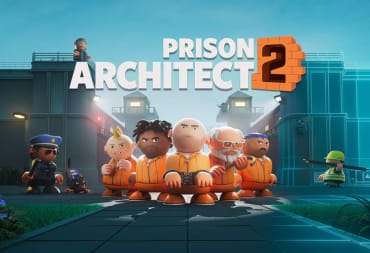The Megami Tensei games and their spin-offs have had all kinds of releases in recent years. Shin Megami Tensei V returned to the supernatural post-apocalypse, Persona continues to tell stories of high school students getting wrapped up in small-town mysteries, and Soul Hackers takes the core concept to the future. How well does Soul Hackers 2 lean into what has worked in the past, or break away in its own way though?
Set in a future where humankind has developmentally and technologically stagnated a sentient AI named Aion has been watching the world. Using its infinite computational power to predict the future it sees that the death of two humans will lead to the destruction of the world. Aion creates Ringo and Figue, sentient AI in human form, and sends them out into the world to stop this oncoming apocalypse. As the story unravels the players encounter returning rival Devil Summoner factions, the Yatagarasu and the Phantom Society, a power source known as Covenants that have the ability to reset the world, and a shadowy figure known as The Black Mask who is trying to reset the world in his image.

Players immediately get thrown into a world of conflict and have to hit the ground running as the first task you're given is to save the life of Devil Summoner Arrow. If you're feeling lost among the jargon and new concepts Ringo is the perfect foil for asking questions because she's as new as you are. A lot of the story, stakes, and core concepts behind the story are frontloaded, but once you're through the first few hours everything should be making sense.
For fans of SMT and its spin-off titles, the grandeur of the main quest won't be too new, but the futuristic setting is a fun twist compared to the usual post-apocalyptic backdrop that SMT games are normally set in. The regular sandy ruins are swapped out for skyscrapers and bright neon signs. Dungeons that you dive into are a labyrinth of tunnels filled with demons that are friend and foe alike. Among the random demons popping up to attack you you'll also run into your own demons out on recon, interacting with these will reward the player with healing, special items, or more demons to recruit.
Through the story, you'll get to explore a variety of locations including shipping yards, subways, and large office buildings. When not delving through a dungeon you'll get to kick back and do some shopping or spend time with your party members in populated city locations. Spending time with your party members at these kinds of hangouts will raise your Soul Level with them, allowing you to delve into the side dungeon, the Soul Matrix.

The Soul Matrix is a dungeon analogous to Mementos from Persona 5 or the Labyrinth of Amala from SMT III. It's going to be where you'll spend a LOT of time as this is where you can obtain powerful abilities for your party members and meet a variety of Demons to recruit. The Soul Matrix does offer a lot to the player in terms of labyrinth-like dungeon challenges, battles with custom requirements, and a variety of other requests to complete for yen or powerful items.
By the time you get to the third and fourth floor, the idea of the Soul Matrix begins to suffer some cracks and reveal its true nature; a reason for players to grind. You'll feel that there's progression, as characters level up and you collect more demons, but with the same digital patterning across all three party members' dungeons, it feels like it's thrown in to pad out a lot of time. Sure, you're not spinning in circles farming encounters for quick levels, but walking through what feels like endless blue corridors it's too far off. There is some payoff in the form of party members' backstory being delved further into, but it's a few minutes of the story for what might be hours of walking around.

Combat is where you'll see the least change from Persona and SMT titles, even then there are still some nice updates. In these turn-based battles your party will attack, and then the opposing side will have a chance to respond. Outside of dealing damage what you'll be aiming for is building up your Stack, a value that increases when you hit an enemy's weakness or complete other criteria. In the early game, this stack will only increase with a hit on weakness, but by the end of the game scoring critical hits or even healing your allies has a chance to increase the stack further. At the end of your turn, you'll unleash a powerful Sabbath attack that will hit all enemies disregarding any resistance. This system will keep you on your toes always seeking out an optimal way to expand your skills and demons to always be able to attack efficiently.
Another good change to the combat system is that all party members can have any Demon assigned to them. While they might have abilities that better align them with a certain affinity that doesn't mean you can't make a team of single-attack type Demons to best utilize a character's strength, or create an army of Demons with all manner of attacks and weaknesses. The combinations for a team are endless, and if you suffer defeat in battle you can use the information you've learned to recraft your team as a perfect foil. If you're the kind of person who enjoys digging deep into combat systems and creating "ultimate" teams you're going to love getting lost in the woodwork here.

One of the unchanged systems in Soul Hackers 2 is the fusion and creation of new Demons. You'll be able to recruit new demons through your travels in dungeons, but it's then in fusion that you can take their powerful abilities and pass them on. As you level up Ringo the cap to what you can summon will also rise. You'll get to explore the different myths and legends of different mythologies as you summon Japanese Yokai, fuse them with Norse Valkyrie and end up with a Christian angelic being. Finding you've hit a wall in the story and getting to turn around and create an entirely new roster of demons to come back bigger and better with is always an excellent feeling. A few fast fusions can feel like you've skipped what might be hours of grinding of levels in a normal RPG. It's a system that they barely messed with, but when it's so rewarding it's clear why they didn't.
Soul Hackers 2 Review | Final Thoughts
Soul Hackers 2 pulls from the main formula of recent SMT-related titles. The story beats and world-ending threat all lineup, combat has had few enhancements (and changes that have been implemented have been done extremely well), and the fusion system has been left untouched. It might be a format that we know and have experienced before, but it's still a format that works extremely well. If you've found yourself enjoying Persona 5 or SMT V and you're ready for another long JRPG adventure then Soul Hackers 2 will be an enjoyable experience. If you're not looking for a game that will have you grind for hours the Soul Matrix might help alleviate that curve, but its thin veneer will likely lead to you hating your visits.
Soul Hackers 2 was reviewed on PC via Steam with a code provided by the publisher. It is also available on PlayStation 4, and Xbox One
Review Summary
Pros
- High stakes storyline
- Familiar combat
Cons
- Copy/Paste soul matrix
Have a tip, or want to point out something we missed? Leave a Comment or e-mail us at tips@techraptor.net













